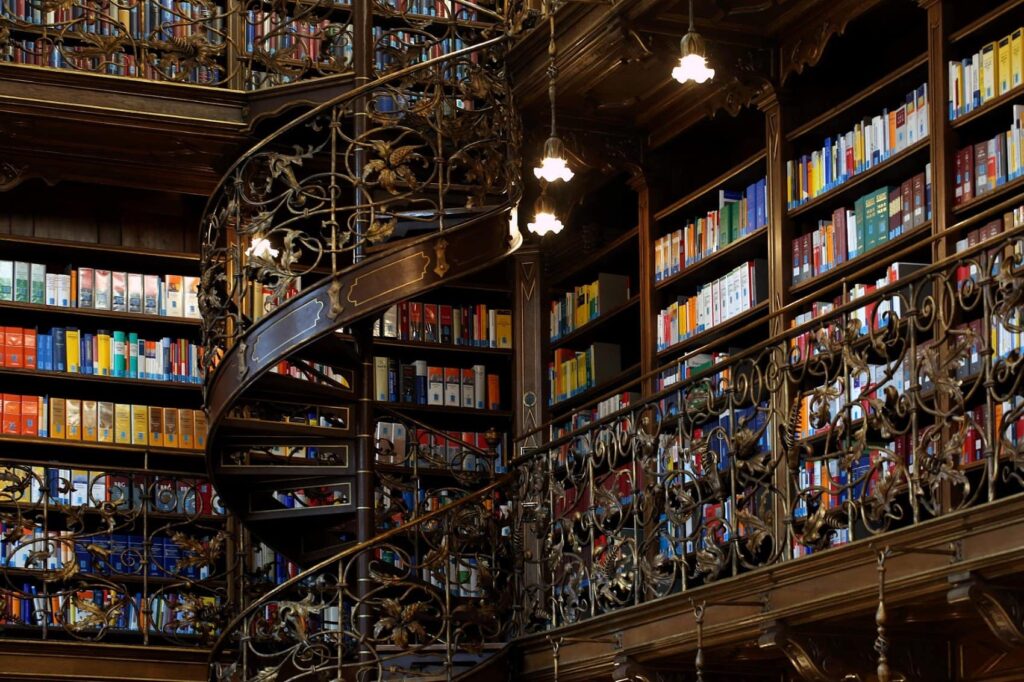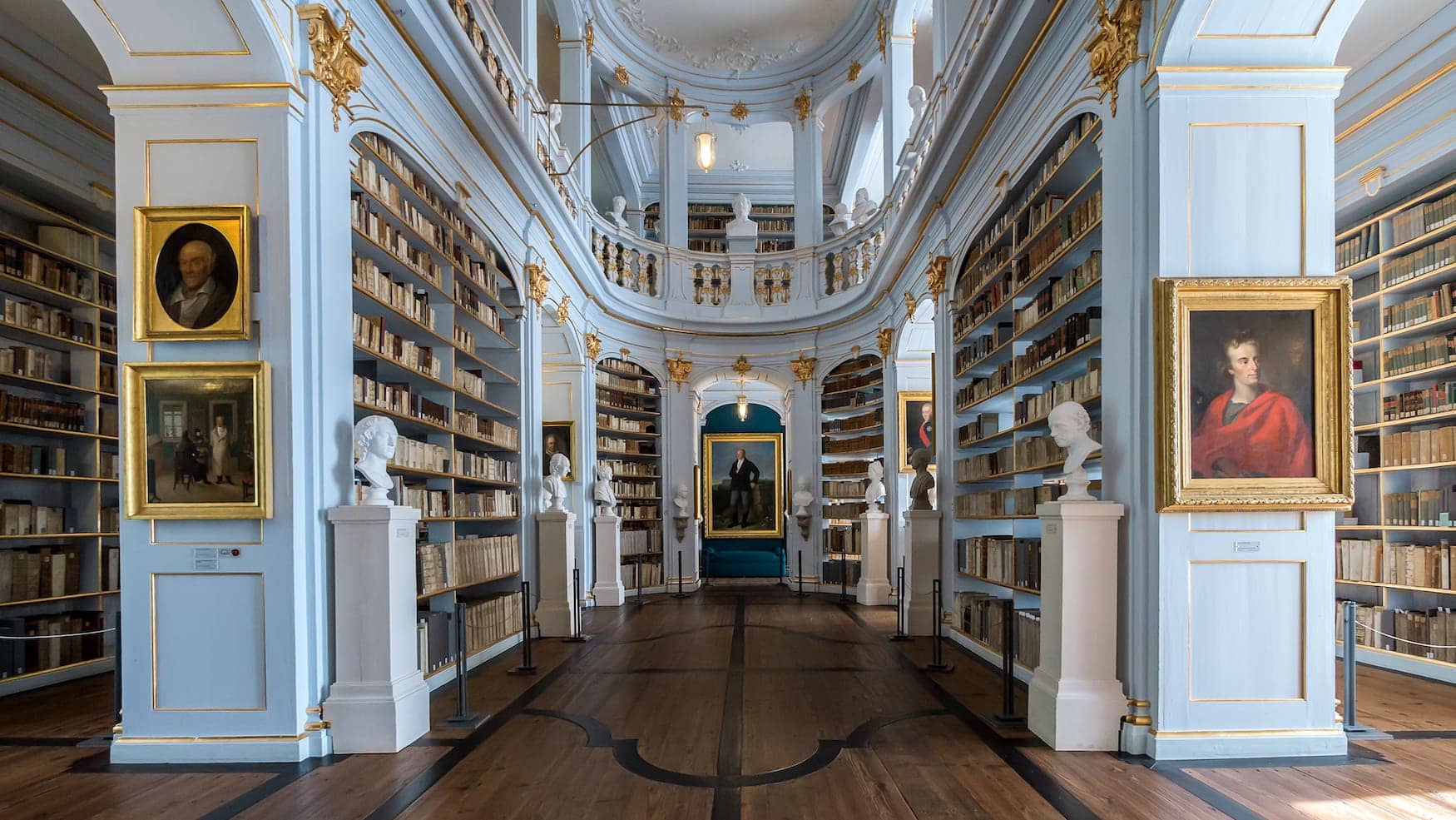Word temples, palaces of knowledge, book repositories—libraries always make the hearts of book lovers beat faster. We present the nine most beautiful libraries in Germany, which are not only storage spaces for literary treasures, but also picturesque eye-catchers.
White as a Ghost: The Stuttgart City Library
Opened in 2011, Stuttgart City Library stands out architecturally because, instead of ornate decorations and historical paintings, this temple of knowledge captivates with its cool, modern elegance. Korean architect Eun Young Yi is responsible for this, creating an open and bright atmosphere with this structured, pyramid-like design. The library’s collection is also future-oriented. More than 1.1 million media items are available for loan, including software packages, images, and graphics. And if you’re late returning something, no problem. An automated system allows bookworms to pick up their books outside of library opening hours.
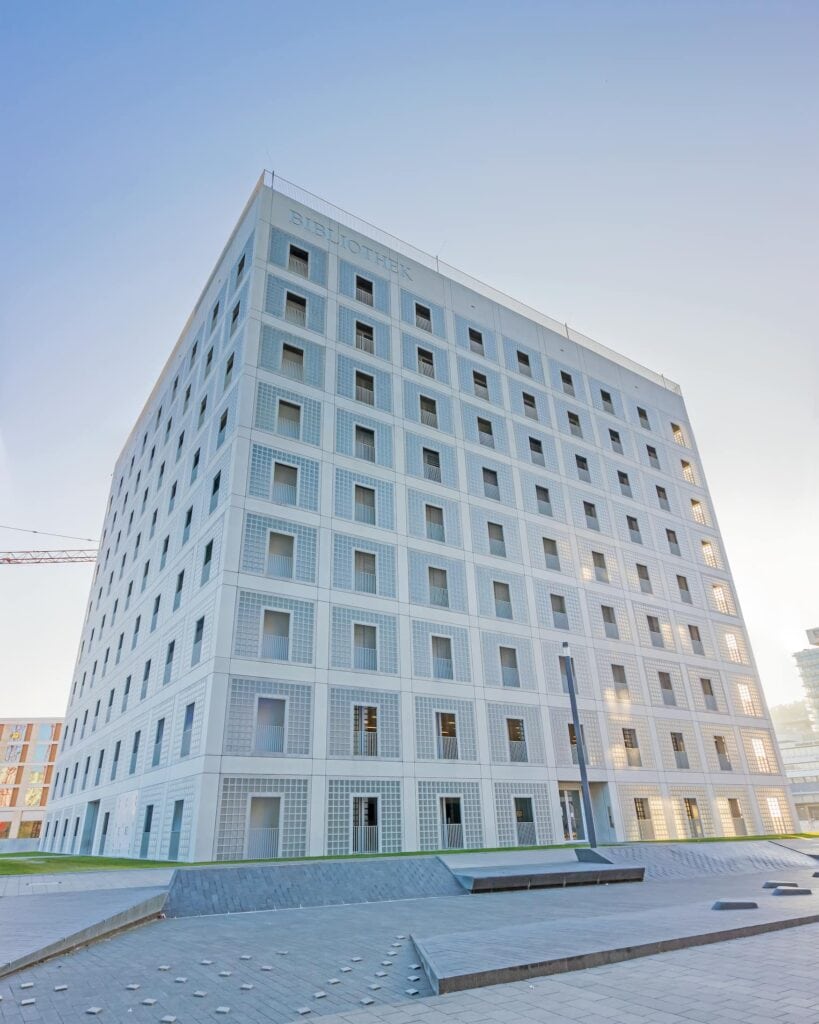

Reading Royally: The Herzogin Anna Amalia Library Weimar
The magnificent oval Rococo hall, the architectural heart of the Herzogin Anna Amalia Library in the cultural city of Weimar, extends over three floors. Halfway between Erfurt and Jena, this temple of knowledge is so beautiful that it almost distracts from the 40,000 books available for loan. Founded in 1691, the book collection, which includes works from the 9th to the 21st century, was under the 35-year direction of the famous writer and Weimar citizen Johann Wolfgang von Goethe from 1797 to 1832.
Since 1998, the Duchess Anna Amalia Library has been part of the “Classical Weimar” ensemble and a UNESCO World Heritage Site. Its most important work is an edition of the first printed Luther Bibles from 1534.
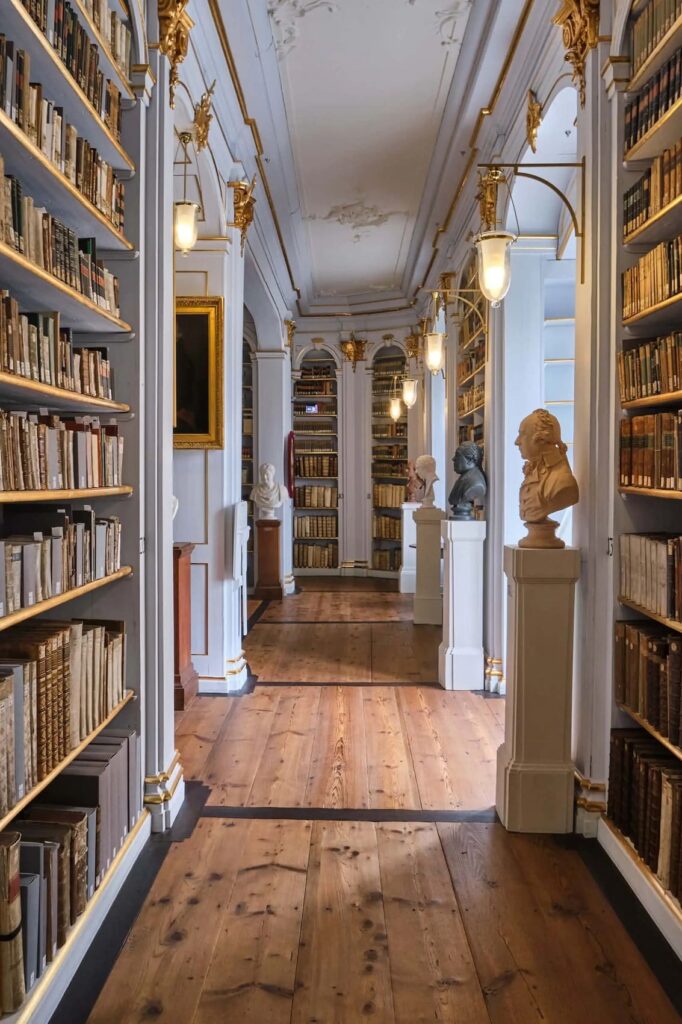
Artful Articulation: The Waldsassen Abbey Library
The Waldsassen Abbey Library is located on the border with the Czech Republic in the Upper Palatinate district of Tirschenreuth. It is one of the most important art history libraries in southern Germany. Construction began as early as 1433. However, the magnificent library hall was not added to the building until between 1724 and 1726, and visitors are still amazed by it today. Life-size carved wooden figures by sculptor Karl Stilp seem to carry all the knowledge on their shoulders; after all, there are around 2,000 theological writings here, spread over two floors.
Other highlights besides the wooden repositories of knowledge include the ceiling paintings by Karl Hofreiter and the playful stucco decorations created by Italian stucco artist Jacopo Appiani between 1724 and 1726.
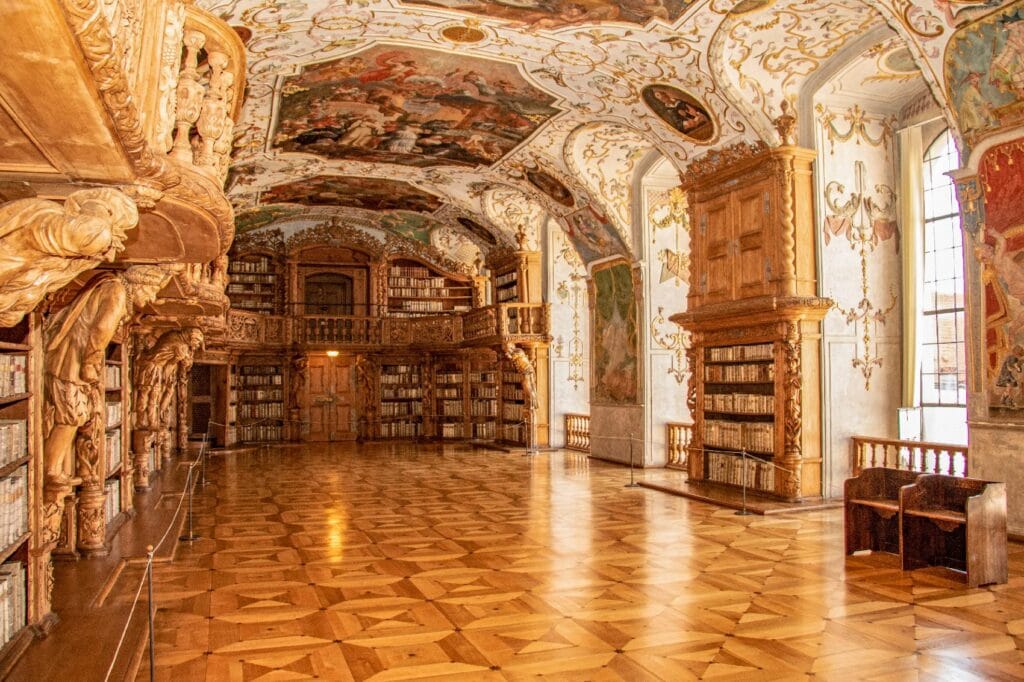
Naturally Curious: The Upper Lusatian Library of Sciences Görlitz
Görlitz is located east of Dresden, on the border with Poland. Thanks to its more than 4,000 cultural and architectural monuments, the city is often the backdrop for major films – earning it the nickname Görliwood. But Görlitz is not only photogenic on the outside; the Saxon city also has inner values, which can be found in the Upper Lusatian Library of Sciences, considered the most important regional library between the Saxon state capital and Wroclaw in Poland.
The architectural highlight is the library hall, which is considered one of the most beautiful library rooms of early classicism due to its simple elegance. Over 150,000 books, around 65,000 of which date from before 1900, can be found here. The oldest volume dates from the 11th century and is a handwritten codex with transcribed texts of the Roman historian Sallust. The collection also includes pamphlets from the Reformation period and atlases by the cartographer Gerhard Mercator from 1571.
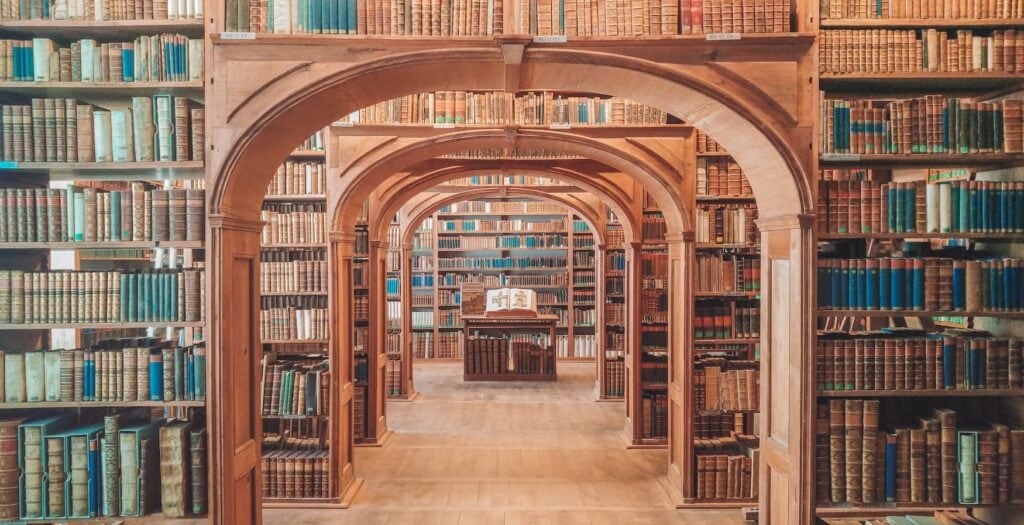
A Bridge to Knowledge: The Jesuit Library Maria Laach
The Jesuit Library Maria Laach in Glees, Rhineland-Palatinate, is one of the largest private libraries in Germany. About half an hour’s drive from Koblenz, it houses around 260,000 volumes, of which around 9,000 were printed before 1800.
The cast-iron staircase and bridge structures, built around 1865, are particularly striking architectural features. According to the state monument preservation authority, this makes the Jesuit Library one of the most remarkable and best-preserved library buildings of the 19th century. Anyone wishing to visit the private library can take part in one of the guided tours.
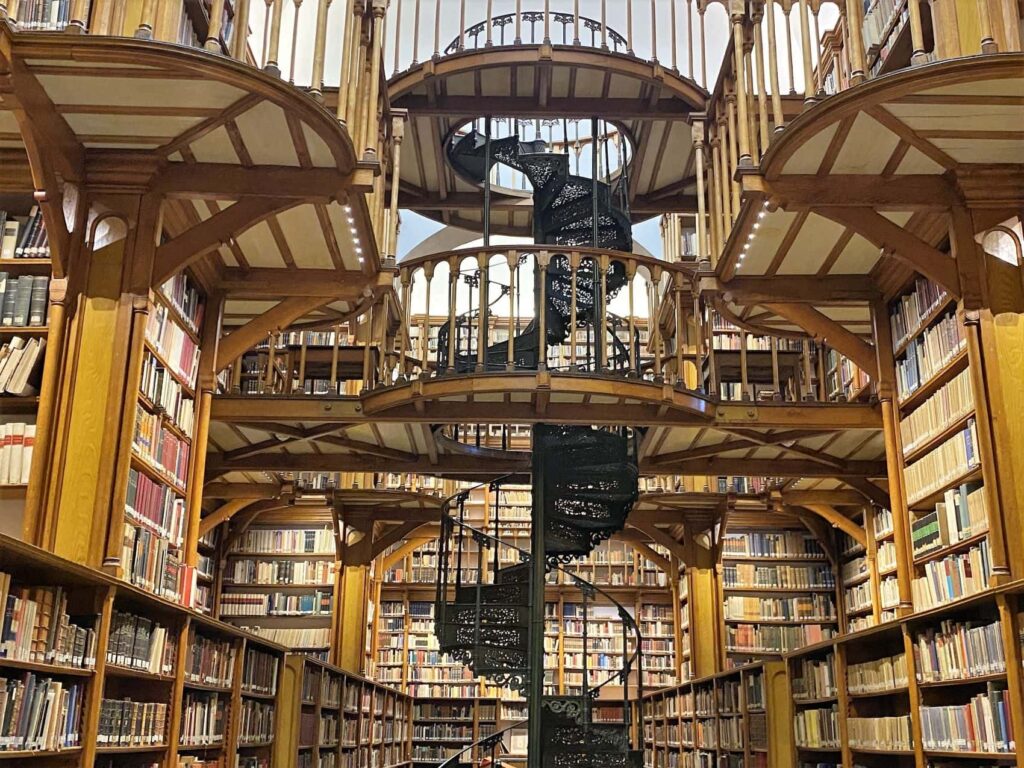
Eyes Up: The Schussenried Monastery Library
The magnificent library hall is considered the most spectacular part of the Schussenried monastery in the Upper Swabian district of Biberach. It is definitely one of the most beautiful libraries in Germany. The books are stored in side cabinets on two floors. Incidentally, the lower doors of the bookcases used to contain fold-out reading desks. The ceiling fresco from 1757 by Franz Georg Hermann depicts the themes of wisdom and science in 14 pictorial sections. Sculptures by the sculptor Fidelis Sporer, completed around 1766, captivate visitors.
Since 1844, the library has served the Protestant community not only as a temple of words but also as a church. For this purpose, an organ was built into the premises at the end of the 19th century.

Rococolossal: The Library Hall in Wiblingen Monastery
The former Benedictine monastery in Ulm-Wiblingen, located between Stuttgart and Munich, houses a magnificent Rococo hall from the mid-18th century. It’s two-story, 23-meter-long book collection was commissioned by Abbot Meinrad between 1740 and 1750. The ceiling fresco was painted by Franz Martin Kuen in 1744.
To create a harmonious interior, all the spines of the books were painted white or covered with light-colored paper. At the entrance to the library, visitors find the inscription “all treasures of wisdom and science”. A reference to the formerly extensive book collection, which consisted of around 15,000 volumes.
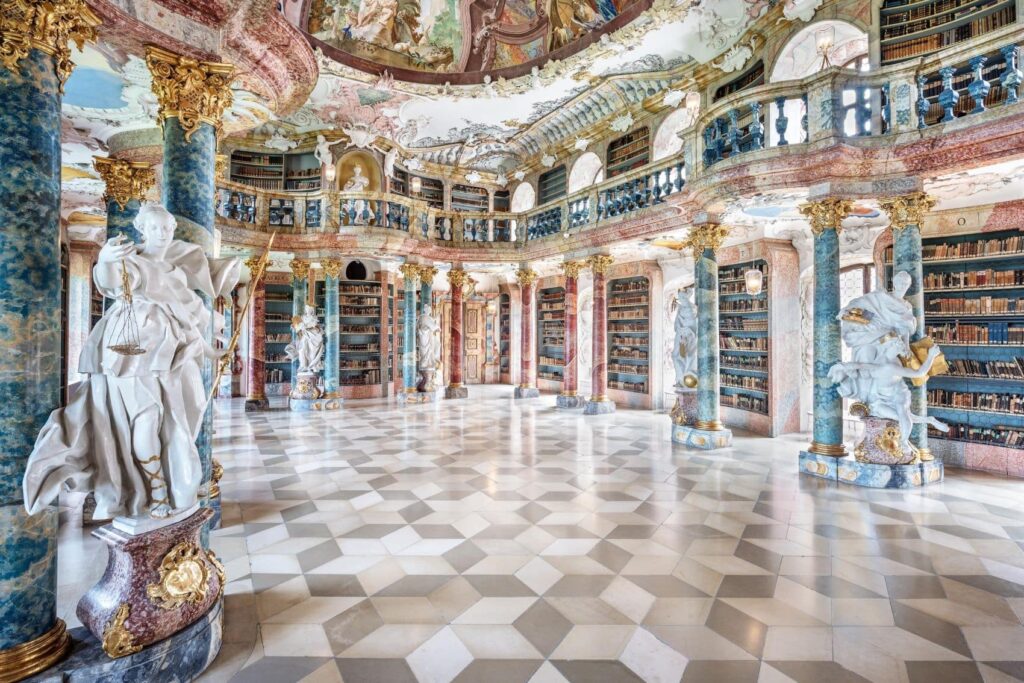
Modern and Mindful: The Jacob and Wilhelm Grimm Center Berlin
There is also a modern library in Berlin. The Jacob and Wilhelm Grimm Center, which combines the central library and the computer and media services of Humboldt University, opened in 2009. It’s impressive reading room was designed by Swiss architect Max Dudler. The staircase-shaped room reaches a height of up to 20 meters and is around 70 meters long. Around 2.5 million books are housed in this library complex, of which around two million can be borrowed.

Magical or Mundane? The Law Library in Munich City Hall
The Law Library in Munich City Hall in Munich is considered one of the most beautiful libraries in Germany and looks like something out of a fantasy novel. Some people like to compare it to Hogwarts, the school of witchcraft and wizardry from the Harry Potter universe. In addition to wrought-iron and gilded spiral staircases, the library impresses with a ceiling almost ten meters high and surrounding balustrades. The furnishings are in the Munich Art Nouveau style. The literary collection comprises more than 30,000 volumes. But as this exceeds the capacity of the room, additional storage space has been created under the town hall roof.
